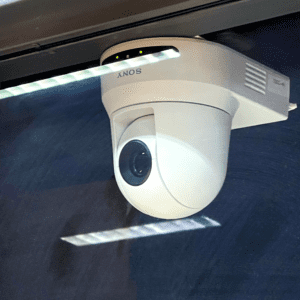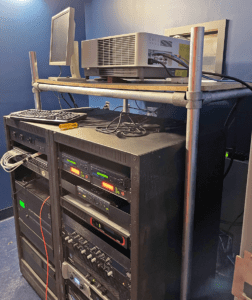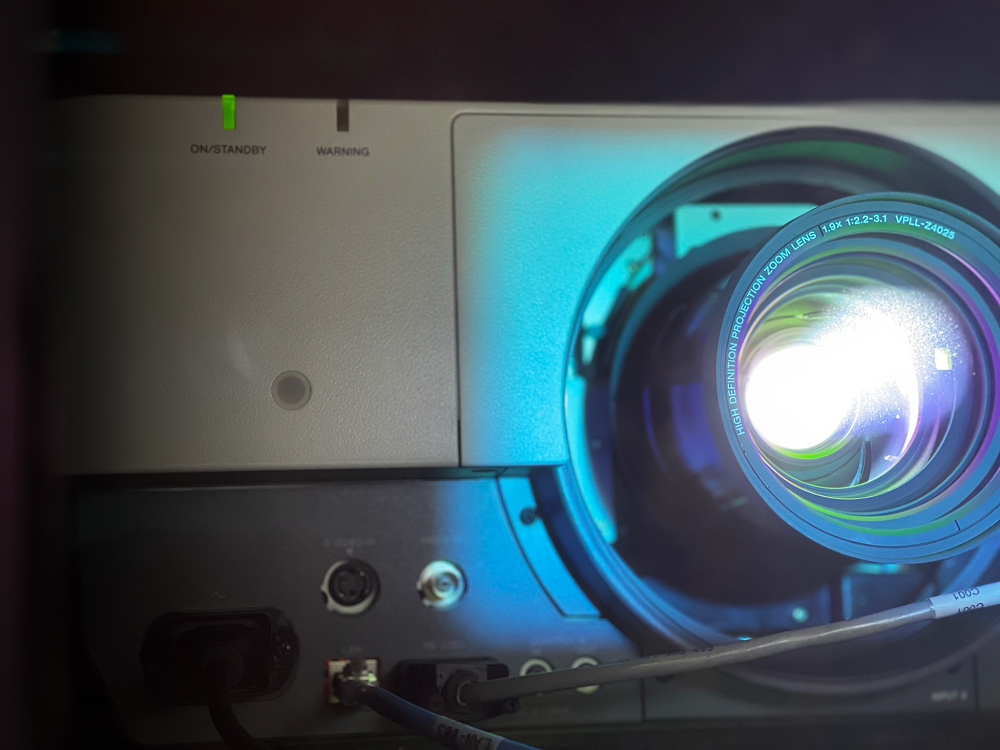The University of Guelph in Ontario, which serves nearly 30,000 students and more than 1,200 faculty, is recognized not only for excellence in the arts and sciences but also for educating the whole person. It does that by seeking to turn knowledge into action and passion. One of the ways the University of Guelph acts on this education commitment is by offering a hybrid learning experience, complete with the latest technologies. From projectors, to PTZ cameras, to displays, the University employs an end-to-end Sony ecosystem to help support instructors’ needs while heightening student engagement.
Selecting the Sony Projectors and PTZ Cameras
 Christopher Hewitt, manager of classroom technical infrastructure at the University was looking for versatile technology that would integrate with the campus’ existing systems. He says the interoperability of the product was paramount in his decision; in addition, the quality of the technology.
Christopher Hewitt, manager of classroom technical infrastructure at the University was looking for versatile technology that would integrate with the campus’ existing systems. He says the interoperability of the product was paramount in his decision; in addition, the quality of the technology.
“Our product selection is primarily from tier-one vendors and vendors that have major brand influence. When we choose a new product, we try to rank it with others to ensure that it is compliant with our needs and then evaluate using factors such as price, serviceability, product reputation, quality and ease of use,” Hewitt says. “Typically, we look for products that are dependable and have companies that stand behind their product. It’s also important to have a sales representative that is local to our market, has a stakeholder relationship with our University and can bring experts to the table to talk about product development.”
Sony Technologies All Across Campus
The University of Guelph uses Sony’s technologies across its campus — from classrooms, to small seminar and lab rooms, to lecture theaters. The University has standardized on a full range of more than 150 of Sony’s laser projectors. The VPL-PHZ10 and VPL-PHZ50 are used in smaller spaces, whereas the VPL-FHZ90 and VPL-FHZ70 are used in larger rooms, with each room typically housing two projectors.
Hewitt notes, “We’ve been using Sony’s projectors exclusively since 2015. When we were looking to make an upgrade, we conducted our own shoot-out testing the Sony projectors against other competitors and we’re confident that the Sony lineup outperformed others. Paired with the exceptional reliability that Sony provides, the models offer us a competitive advantage. In addition, the great sales incentive allowed us to maximize our renewal funding, enabling us to purchase units for more classrooms.”
The University of Guelph depends on the durability and predictability of Sony’s projectors. Hewitt explains, “To have a product that I know lasts about eight or nine years helps me plan for the future and minimize expenditures. Sony released an ECO mode that has drastically extended the life of the projectors. This has saved me over 40% of my budget in projectors over the years and has reduced the amount that I procure. The tight base funding for replacing projectors has meant I am able to stretch these limited dollars into other products and do not have to worry about the lifecycle of these projectors.”
In addition, the University of Guelph has deployed more than 60 of Sony’s PTZ cameras. This includes the SRG-X120 HD camera with zoom capabilities and an SDI output, which is used in rooms where lectures and tutorials are captured. Although Sony was not the initial first choice, the cameras proved to be the right choice for the school. Hewitt says, “When it came time to choose new cameras, we first went with a competitor’s product and although it was implemented by our team, the image quality was not quite there. Instead, we adopted Sony’s SRG series, which successfully replaced our previous units. The attractive Sony devices offered better quality at the same price point while providing us with great support and a product that prioritized image quality. We were quite impressed with the cameras and were pleased that the stock levels didn’t falter during the pandemic.”
The Benefits of the Sony System
 As the school began programming its classes with a hybrid mindset, technology has played an even more important role in providing interactivity and collaboration, in-person and remotely. “We have in-person lectures that are live streamed using a web conference environment that is platform agnostic. Coupled with our standard of being a BYOD environment, it means with little configuration, we are able to accommodate anyone’s laptop into the classroom and successfully have it joined to the conference using Sony’s cameras to capture the audience and lecturer’s class,” describes Hewitt.
As the school began programming its classes with a hybrid mindset, technology has played an even more important role in providing interactivity and collaboration, in-person and remotely. “We have in-person lectures that are live streamed using a web conference environment that is platform agnostic. Coupled with our standard of being a BYOD environment, it means with little configuration, we are able to accommodate anyone’s laptop into the classroom and successfully have it joined to the conference using Sony’s cameras to capture the audience and lecturer’s class,” describes Hewitt.
He continues, “With regards to the technology that we put in place over the pandemic, the Sony cameras have given the ability to live conference from the classroom to students and other faculty members abroad resulting in increased engagement, web conference capability and the ability to have a hybrid lecture that is two-way. It allows participants to not only view the classroom but participate interactively.”
Students, Faculty Members Notice the Difference
The technology in place is also making an impact on its beneficiaries. Hewitt explains, “Students and faculty members alike have noticed a difference in the quality of the images displayed on-screen. Having a great image is paramount to the student experience, with rich colors, true blacks and deeper contrast – especially when placed in a class where color and experience matter. Our College of Arts have depended upon Sony’s projectors through the years and are very fond of the experience they deliver.”
The final reason Hewitt cites for aligning with Sony was their overall partnership. From progressive service and support to creative problem solving, Hewitt adds, Sony went above and beyond. Sony helped the University capitalize on the latest education trends to create a more dynamic learning experience for students.










